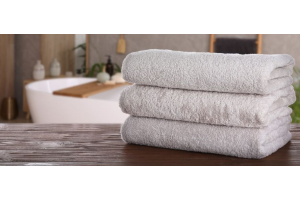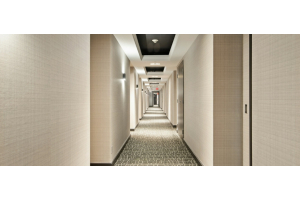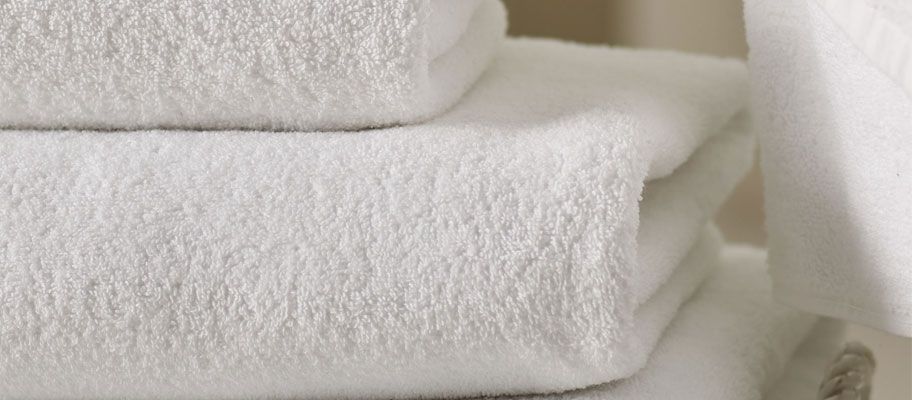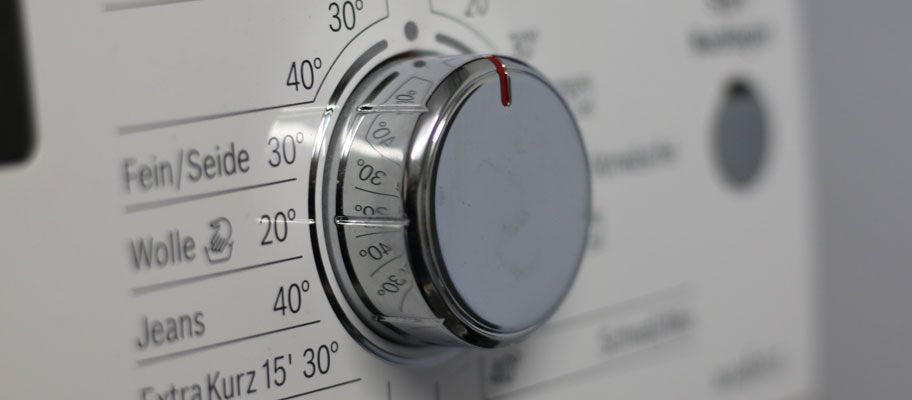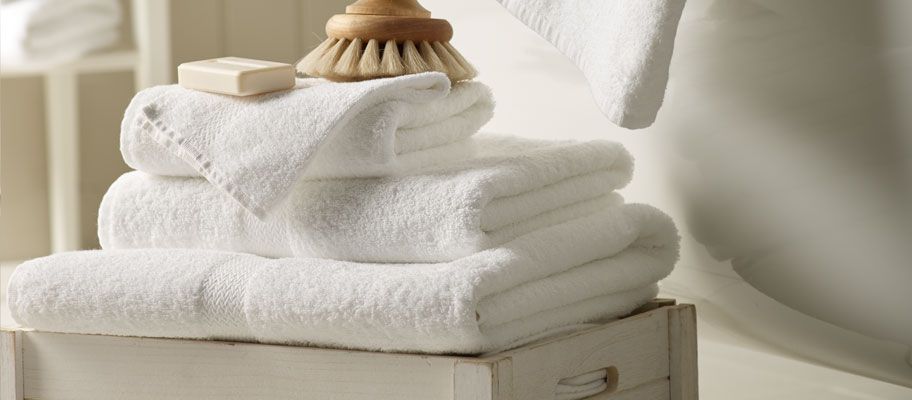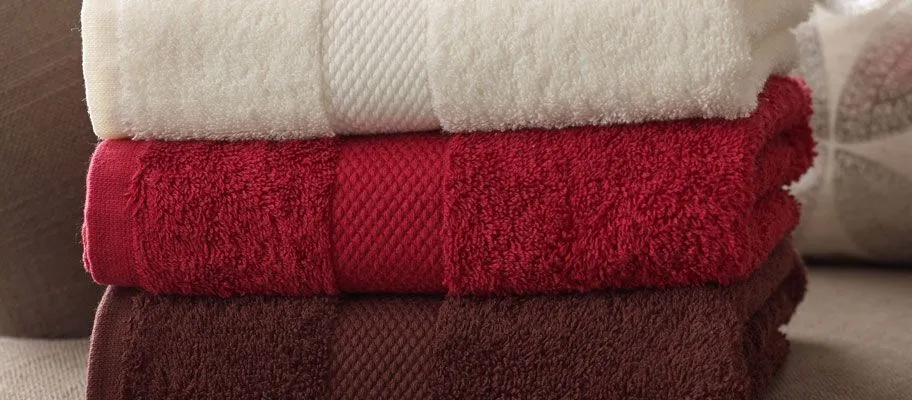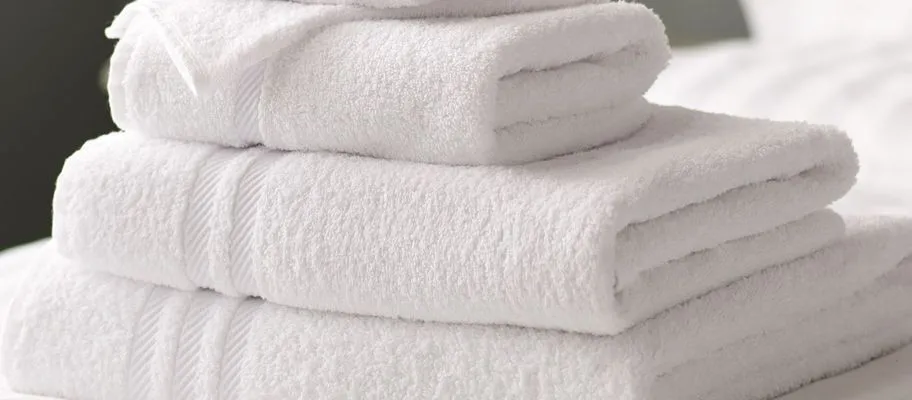We use cookies to give you the best possible experience. To accept cookies continue browsing, or view our Cookies Policy to find out more.
How to Wash Your Towels For Long-Lasting Hotel Quality
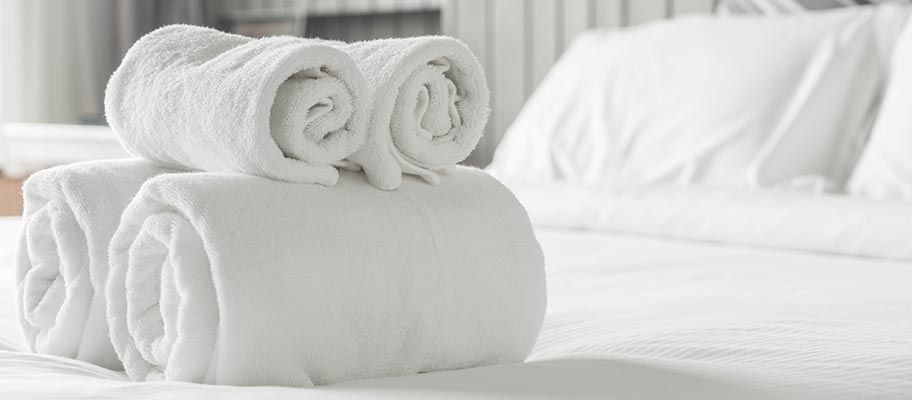
Stay in any hotel, bed and breakfast or guest house and you’ll soon notice that the towels are super soft, super white and superbly fluffy. So, how can you keep your hotel quality towels fresher and whiter for longer? It’s important to know the best way to wash towels for your hotel or bed and breakfast as they’ll have to withstand the test of time and will be used by many different guests, meaning more washes than what they would go through in a private home. In fact, it’s essential that you choose towels specifically created with hotels and hospitality in mind to ensure they are designed and crafted to withstand a rigorous commercial washing process.
As hotel guests spend a lot of time in contact with towels they tend to become soiled quickly. Add in the fact that they become wet and dry multiple times and you’ve got a breeding ground for bacteria and mould. If you wash all your bath linen and towels in-house and don’t benefit from the advantage of outsourcing your linen to a commercial laundry for cleaning, then you might be wondering where to start in ensuring your towels and robes last for years to come.
What Temperature Should I Wash my Towels at?
It’s important to remember not to overload or under fill the washing machine during the washing process. If it’s too full, there won’t be enough space for the cycle to fully clean the clothes and if it’s under filled, the linen may break down faster meaning you’ll have to buy new towels sooner rather than later. For household washing machines, the best temperature to wash towels at is at around 40 degrees. Washing at 40 degrees will ensure your towels stay feeling and looking their best for longer, whilst removing most of the germs that breed there. For those using a washer extractor or continuous batch washer, it’s important to wash in hot water with detergent before use. This will help to bind loose fibres, prevent pulled threads and increase absorbency. In order to produce towels of a good whiteness from the wash and prevent greying, an adequate temperature is required to swell the yarn and release any soiling.
Next, dosing with a sufficient amount of detergent is crucial in order to suspend the soiling in the wash so that it doesn’t redeposit onto the towels. Firstly, in a prewash, we’d recommend washing in a medium dip level at around 38 degrees for four minutes using a third of the total detergent quantity. Detergent in washer extractors or tunnel washers should be around four grams per kilo. The aim of the prewash is to soften protein stains such as food, vomit, blood. Do not exceed this temperature as this will set protein stains making removal almost impossible.
Next, wash at a low dip level at 75 degrees for around 12 minutes using the final two thirds of the detergent. To rinse, wash at a high dip level for three minutes with around six millilitres per kilogram of dry linen, of sodium hypochlorite, if necessary for stain removal. Ensure you do this in cold temperatures. Interspin for one minute. This is very useful to improve the rinse efficiency as more residual wash chemicals will be removed. For the second rinse, wash in a high dip level for three minutes on a cold temperature. A suitable antichlor should be added in the final rinse to fully neutralise the hypochlorite and to prevent any fabric damage.
Finally, spin for nine minutes at a high speed to extract the maximum amount of moisture. Spinning uses 1/15th of energy per litre of water extracted than would be used in the tumble dryer. Efficient water extraction can save valuable minutes compared with a dryer. Fabric softener can be used in the final rinse to improve softness and smell. However, we generally don’t recommend this as it can over lubricate the fibres, reduce water absorption and it can lead to fibre loss.
What’s the Best Way to Dry my Hotel Towels after Washing?
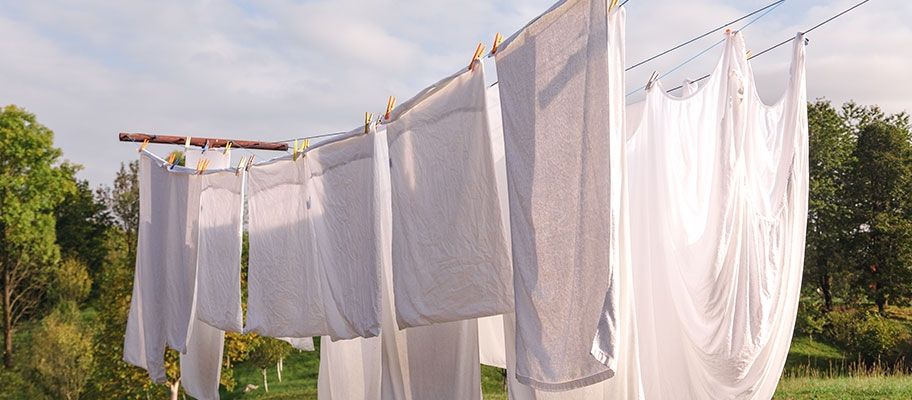
The best way to dry your towels after washing is to firstly remove from the washing machine as soon as the cycle has finished. This eliminates the opportunity for mildew to set in. Towels should be put on a clothesline or maiden to dry, without doubling the material over. If the weather permits, hang towels to dry outside. It can often speed up the drying time, keeps them fresh, helps to sanitise the towels and doesn’t cost a thing.
Most issues with towels arise from the drying process. The first part of the drying stage, if you’re to use a tumble dryer, should be at a cool temperature until the load is broken up and the terry loops have opened out. Only then should the full force of the heat be allowed to touch the fabric. This will prevent harshness caused by drying towels when they are still squeezed flat. Drying should stop when the moisture content is around 4% to allow enough time for a cool down. Most commercial laundries will have an end point sensor to detect this. This avoids harshness caused by slight over-drying. It also avoids abrasion of the side and top hems and subsequent fraying.
Take care not to over dry. Tumbling the bone dry towel can cause a formation of tiny static charges on the tips. This will then attract particles from the drying air stream which become embedded in the fibres and will cause your hotel quality towels to grey. We recommend a resting time of around 24 hours before use. This allows the fibres to relax and absorb moisture from the atmosphere making them suppler, less brittle and works to prevent fibre breakage during use.


